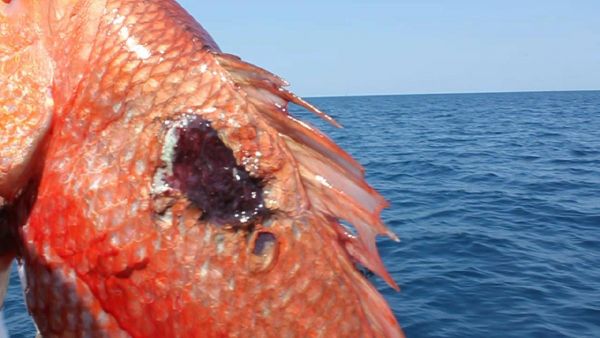
Guides, researchers look to BP oil spill as cause
On one hand, it’s just too soon to discern any long-term effects of the Deepwater Horizon oil disaster and subsequent cleanup on the health of the fisheries along the Southeast Louisiana coast and in the Gulf of Mexico.
Scientists do not have enough data collected to make blanket statements about how healthy the fish populations are and what the future looks like for Louisiana’s immense recreational and commercial fishing industry.
On the other hand, in the short term, fishermen are seeing signs in some of the most heavily oiled areas that aren’t very encouraging.
While the fishing has been reported to be better than average in some stretches of the coast, people who have been fishing for decades out of locations like Venice say something just isn’t right. No matter what anyone says.
They’ve seen high rivers. They’ve seen flood gates opened. They’ve worked through land loss. They’ve seen bad years and good years.
What they haven’t seen is 206 million gallons of oil and 1.84 million gallons of toxic dispersant dumped into their once prime fishing spots.
What they also haven’t seen before are the sores and lesions being widely reported on fish caught in the areas most heavily oiled.
“It’s been getting progressively worse,” Ross Barkhurst, who has been fishing out of Venice since 1982, said about the numbers of fish.
This season, he said, is worse than the last.
Among both speckled trout and the redfish, Barkhurst said, there’s an age class — the 2-year-olds — missing entirely.
Barkhurst said his charter-fishing business is largely surviving because he’s still able to catch redfish. The numbers are down, he said, but they are still there.
But he said he’s having a much more difficult time finding speckled trout. In spots previously known for producing large numbers of specks, the fish just aren’t there. And the areas that do have trout, he said, are overcrowded with boats.
Lately it’s been taking the entire day to finish out limits, rather than having clients’ bags filled by the morning as in pretty much every season in the past.
For Shane Mayfield, who has been fishing out of Venice for 15 years, his experience in the area has been the same as Barkhurst’s.
“No one can consistently catch fish,” he said.
He’s found better results in other areas along the river, but the area south of Venice that he’s accustomed to just isn’t the same.
“Something’s not right,” he said.
Dr. James Cowan, a professor at LSU’s Department of Oceanography and Coastal Sciences, acknowledged receiving reports of unhealthy fish — and the actual fish — nearly every day.
“I’ve never seen anything like this before,” Cowan said. “And it really started after the oil spill.”
Cowan said the same afflictions have been seen on at least 25 species of fish, including red snapper, amberjack, blackfin tuna, redfish, speckled trout and mangrove snapper.
“It’s some nasty stuff,” Cowan said.
Click here to download September’s digital edition of Louisiana Sportsman to read the rest of this story and the full coverage of potential fish-health concerns at the mouth of the Mississippi River. The magazine also is available on newsstands around the state.
